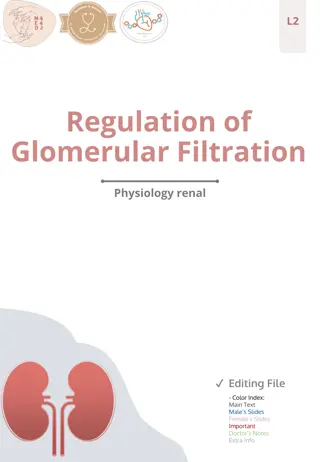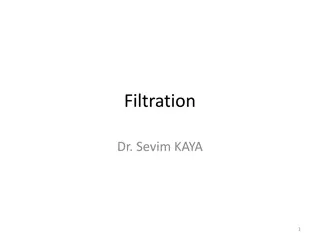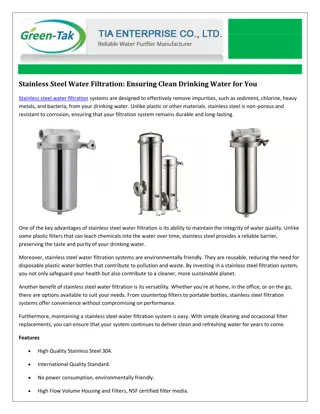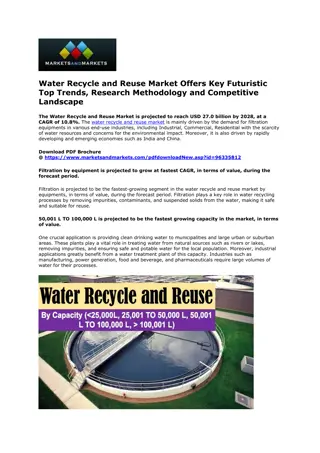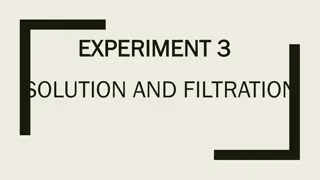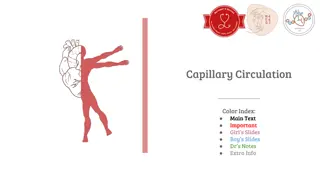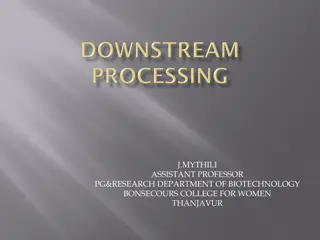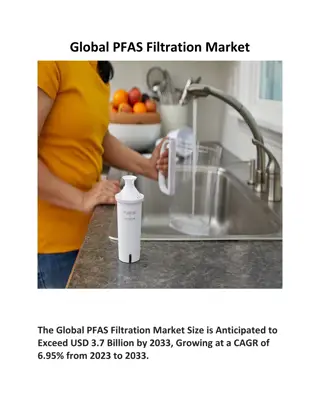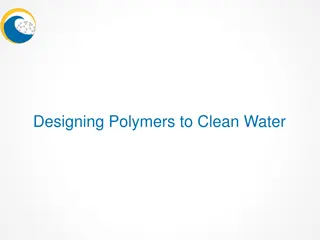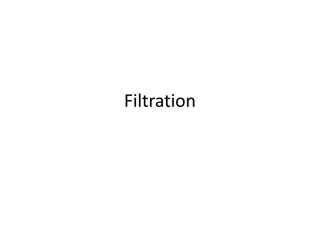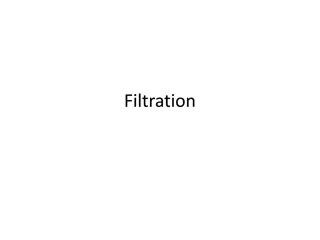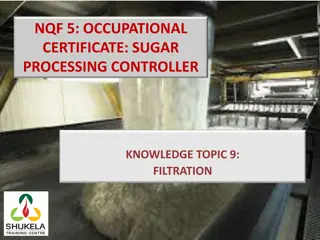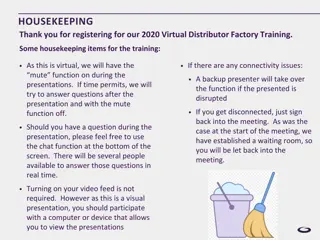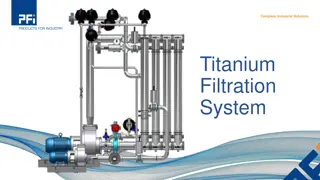
Pressure Filters and Filter Press in Filtration Processes
Explore the principles and components of pressure filters and filter presses used in industrial filtration operations. Learn how these units work, the types of units involved, and the steps involved in the filtration process for efficient separation of solids and liquids. Discover the importance of frames, plates, and filter medium in achieving successful filtration outcomes.
Download Presentation

Please find below an Image/Link to download the presentation.
The content on the website is provided AS IS for your information and personal use only. It may not be sold, licensed, or shared on other websites without obtaining consent from the author. If you encounter any issues during the download, it is possible that the publisher has removed the file from their server.
You are allowed to download the files provided on this website for personal or commercial use, subject to the condition that they are used lawfully. All files are the property of their respective owners.
The content on the website is provided AS IS for your information and personal use only. It may not be sold, licensed, or shared on other websites without obtaining consent from the author.
E N D
Presentation Transcript
Pressure filters-Plate and frame filter press and Meta filter Vacuum filters-Filter leaf Centrifugal filters-centrifuges
Filter paper and funnel Buchner funnel and filter paper Sintered glass filter Seitz filter Membrane filter
Principle: Mechanism is surface filtration. The slurry enters the frame by pressure and flows through filter medium. The filtrate is collected on the plates and send to outlet. A number of frames and plates are used so that surface area increases and consequently large volumes of slurry can be processed simultaneously with or without washing
The Filter press is made of two types of units, plate and frames.Usually made of aluminium alloy. Sometimes, these are also lacquered for protection against corrosive chemicals and made suitable for steam sterilization. Frame It contains a open space inside wherein the slurry reservoir is maintained for filtration and an inlet to receive the slurry. It is indicated by two dots in description. Frames of different thickness are available. It is selected based on the thickness of cake formed during filtration.Optimum thickness of frame should be chosen.
Plate The plate has a studded or grooved surface to support the filter cloth and an outlet. It is indicated by one dot in description. Plate supports the filter medium, receiving the filtrate and outlet. The filter medium usually cloth is interposed between plate and frame. Plate, filter medium, frame, filter medium and plate are arranged in sequence and clamed to a supporting structure. It is normally described by dots as 1.2.1.2.1 so on. A number of plates and frames are employed so that the filtration area is as large as necessary. Number of filtration units are operated in parallel. Channels for slurry inlet and filtrate outlet can be arranged by fitting eyes to the plates and frames, these join together to form a channel. In some types only one inlet channel is formed, while each plate is having individual outlets controlled by valve
Working can be divided into two steps- 1. Filtration operation 2. Washing of cake (if desirable) Filtration operation Frame- marked by 2 dots Plate marked by 1 dot
Slurry enters the frame from the feed channel and passes through the filter medium on the surface of the plate. The solid forms a filter cake and remain in the frame. The thickness of the cake is half of the frame thickness, because on each side of frame filtration occurs. As filtration proceeds, the resistance of the cake increases and filtration rate decrease. The filtrate drains between the projections of the surface of the plate and escape from the outlet. Thus two filter cakes are formed , which meet eventually in the centre of the frame. At a certain point process is stopped and press is emptied and cycle is restarted.
When washing of cake is also required modified plate and frame filter is used. For this purpose an additional channel is included called as washing plate and are identified by 3 dots. In the half of the washing plate, there is a connection from wash water cannel to the surface of plate. The sequence of arrangement of plates and frames can be represented by dots as 1.2.3.2.1.2.3.2.1 so on (between 1 and 1, 2.3.2 must be arranged.
Sterile filtrate can by obtain by using asbestos and cellulose filter sheet (for this, whole filter press and filter medium have been sterilized previously). Filtration of viscous liquid can also be done by incorporating heating/cooling coils in the press.
Construction of filter press is very simple and a variety of materials can be used. I. Cast iron for handling common substances. II. Bronze - for smaller units. III. Stainless steel contamination can be avoided. IV. Hard rubber and plastic- used where metals must be avoided. V. Wood- for lightness though it must be kept wet. Provide large filtration area in relatively small floor space. The capacity being variable according to thickness of frames and number used. Sturdy construction permits the use of considerable pressure difference. (2000 Kilopascals normally used) Efficient washing of cake is possible. Operation and maintenance is easy. It produce dry cake in form of slab.


